Introduction:
Have you ever stood before your mirror, brush in hand, wondering why your locks never quite behave like those in shampoo commercials? That frustration you feel isn’t just about having a bad hair day—it stems from a fundamental misunderstanding of your unique hair type.
For countless people worldwide, the path to hair satisfaction begins with this realization: what works beautifully for your friend’s sleek, straight tresses might leave your curly mane looking like you’ve survived an electrical storm. Different hair types require unique approaches to care, styling, and maintenance.
Understanding your specific hair type transcends mere aesthetics. It represents the first critical step toward embracing your natural beauty and providing your strands with precisely what they need to flourish. When you work with—rather than against—your natural hair structure, you unlock a world of possibilities that no one-size-fits-all hair care routine could ever provide.
Understanding the Science Behind Different Hair Types
Before diving into classifications and care routines, let’s explore what creates these differences at a biological level. Hair type variations don’t happen by chance; they’re determined by several key factors:
- Follicle Shape: The configuration of your hair follicles largely dictates your hair pattern. Round follicles typically produce straight hair because the strand grows evenly from all sides. Oval or asymmetrical follicles create wavy or curly hair as the strand grows unevenly, forcing it to curve or twist.
- Genetic Inheritance: Your hair structure primarily comes from your genetic makeup, passed down through generations. This explains why hair types often run in families, though variations can certainly appear.
- Ethnic Background: Different populations evolved distinctive hair characteristics based on geographical and environmental adaptations over thousands of years. These evolutionary adaptations explain why certain hair types predominate in specific regions worldwide.
- Hormonal Influences: Changes in hormone levels—during puberty, pregnancy, or with age—can temporarily or permanently alter your hair’s texture and pattern.
Grasping these fundamental biological factors helps explain why certain products and techniques work differently across various hair types. This understanding forms the foundation for making informed decisions about your hair care routine.
Fact #1: There Are Four Main Hair Type Categories
The Universal Hair Type Classification System
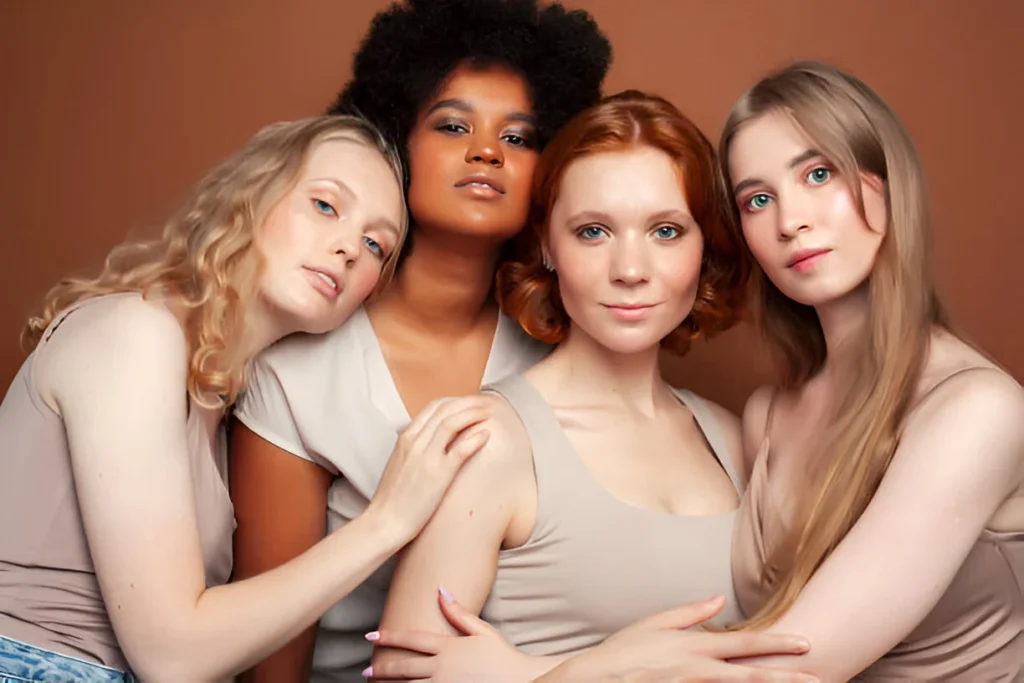
While numerous hair typing systems exist, the most widely recognized categorizes hair into four primary types, each with its own subcategories for greater precision:
- Type 1: Straight Hair
- 1A: Fine, thin, and soft straight hair that resists holding curl. Typically very shiny and prone to becoming oily quickly as natural oils travel easily down the straight shaft.
- 1B: Medium-textured straight hair with more volume and body than 1A. Holds styles a bit better while maintaining a smooth appearance.
- 1C: Coarse, thick straight hair with considerable volume. May display slight bends or resistance to styling and often proves challenging to curl.
- Type 2: Wavy Hair
- 2A: Fine, loose S-shaped waves with minimal frizz. This hair typically lies relatively flat at the crown with more pronounced waves beginning from mid-shaft.
- 2B: Medium-textured waves with more defined S-patterns. Tends to be frizzier than type 2A, with more noticeable waves starting closer to the roots.
- 2C: Coarse waves with well-defined S-patterns throughout. These waves form distinct S-shapes and rings, with considerable volume and frizz potential.
- Type 3: Curly Hair
- 3A: Loose, springy curls forming well-defined loops approximately the diameter of a sidewalk chalk piece. Typically shiny with a clear S-pattern.
- 3B: Medium-tight curls resembling springy ringlets about the size of a Sharpie marker. Generally very voluminous with a mixture of textures possible.
- 3C: Tight corkscrew curls that are densely packed and approximately the diameter of a pencil.
- Type 4: Coily/Kinky Hair
- 4A: Tightly coiled strands forming a distinct S-pattern when stretched. These delicate coils have visible definition and typically maintain their pattern even when extended.
- 4B: Z-shaped pattern rather than a defined curl. The sharp angles create a zigzag appearance rather than coils, with less visible curl definition than 4A.
- 4C: Tightly compressed coils with minimal visible curl pattern unless stretched. The most fragile of all hair types, 4C hair experiences significant shrinkage—up to 75% of its actual length.
Understanding where your hair falls within this classification system provides the foundation for tailoring your care routine. However, remember that many people have combination hair featuring multiple types and patterns throughout their heads.
Fact #2: Hair Porosity Significantly Impacts Hair Care Needs
What Is Hair Porosity and Why Does It Matter?
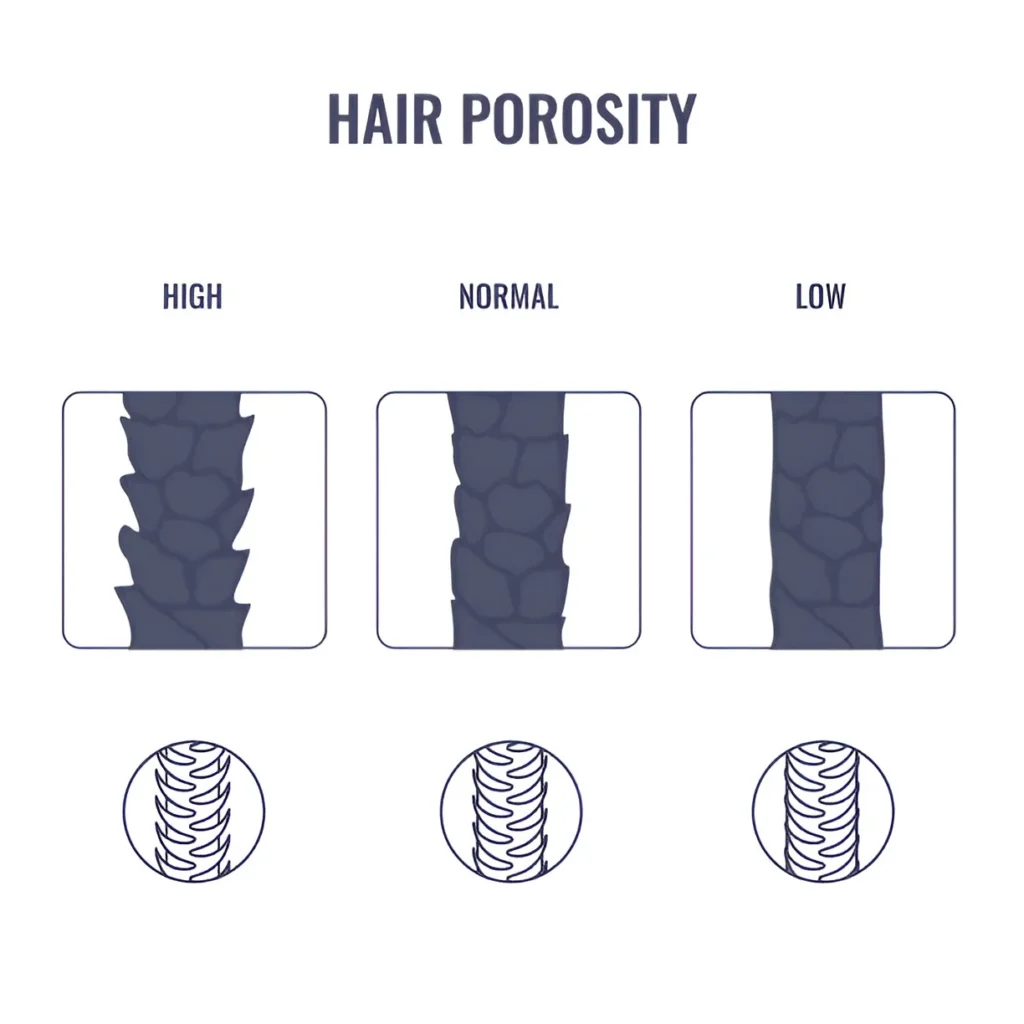
While curl pattern often dominates hair care discussions, porosity might actually hold greater significance for determining your ideal routine. Hair porosity describes your strands’ ability to absorb and retain moisture—a characteristic just as crucial as your curl pattern when selecting products and techniques.
The Three Porosity Levels
- Low Porosity Hair
- Features tightly closed, overlapping cuticles that resist moisture penetration
- Products often remain on the surface of the hair shaft instead of being properly absorbed.
- It takes significantly longer to become saturated when washing.
- Dries slowly once wet
- Often appears shiny due to the smooth, closed cuticle surface
- Best practices: Apply products to damp (not soaking) hair; use moderate heat when deep conditioning to help open the cuticle; select lighter, water-based formulations; avoid heavy protein treatments which may create buildup.
- Medium Porosity Hair
- Exhibits balanced moisture absorption and retention capabilities
- Cuticles neither too tight nor too open
- Accepts color treatments well with predictable results
- Typically requires the least specialized care
- Maintains styles relatively well
- High Porosity Hair
- Possesses raised, sometimes damaged cuticles that allow rapid moisture absorption
- Loses moisture just as quickly as it absorbs it
- Prone to significant frizz and tangles
- Dries remarkably fast
- Often appears dull unless properly moisturized and sealed
To determine your porosity level at home, try the simple float test: Place a clean, product-free strand of your hair in a glass of water. If it floats for a long time, it likely indicates low porosity. If it sinks slowly, this suggests medium porosity. If it sinks slowly, you probably have medium porosity. If it sinks immediately, your hair likely has high porosity.
Fact #3: Hair Density Is Independent of Hair Type
Many haircare discussions mistakenly conflate hair type with density, but these characteristics exist independently of each other. You can have sparse, fine straight hair or dense, thick coily hair—any combination is possible.
Understanding Hair Density Categories
Hair density refers specifically to how many individual strands occupy your scalp per square inch—essentially how closely packed your follicles are.
- Low Density: You can easily see your scalp without manipulating your hair. Light easily passes through when holding your hair up to illumination. Ponytails appear visibly thinner than average.
- Medium Density: Your scalp remains partially visible but not immediately obvious. This represents the most common density level, where your scalp might peek through in certain areas but remains generally covered.
- High Density: Your scalp proves difficult to see even when deliberately trying to part the hair. Ponytails appear notably thick, and managing volume often becomes a primary styling concern.
Different density levels necessitate unique approaches regardless of your curl pattern:
- Low-density hair benefits from volumizing products, layered cuts, and techniques that create an illusion of fullness.
- Medium-density hair allows the most styling versatility and typically requires balanced approaches without extremes.
- High-density hair often needs thinning techniques, moisture-rich products to prevent frizz, and styles that work with—rather than fight against—natural volume.
Understanding your density helps you select appropriate styling tools, product amounts, and cutting techniques that complement your specific hair characteristics.
Fact #4: Hair Thickness (Strand Width) Affects Product Selection

Adding another layer to this complex picture, individual strand thickness (diameter) significantly impacts how your hair behaves and which products perform best. This characteristic exists independently of both your curl pattern and density.
How to Determine Your Hair Strand Thickness
To assess your strand thickness, compare a single hair to a sewing thread:
- Fine: Each strand feels like thin silk thread or appears nearly invisible between your fingers. Fine hair typically has less natural strength and breaks more easily. It often feels soft and airy but may lack volume and become oily quickly.
- Medium: Each strand approximates standard sewing thread thickness. This represents the most common thickness level, offering reasonable strength and styling versatility.
- Coarse: Each strand feels noticeably thick, sturdy, and possibly wiry between your fingers. Coarse hair typically possesses natural strength but may resist chemical treatments and require more intense moisturizing to maintain softness.
Product Recommendations Based on Strand Thickness
- For Fine Hair:
- Select lightweight, volumizing products that won’t weigh strands down
- Choose mousses and sprays rather than creams or oils
- Incorporate gentle protein treatments to strengthen the hair’s natural structure.
- Avoid silicone-heavy formulations that create buildup
- Select clarifying products to prevent oil accumulation
- For Medium Hair:
- Enjoy versatility with most mainstream product types
- Balance moisture and protein based on other hair characteristics
- Experiment with various formulations to find preferred texture and finish
- Select products primarily based on porosity and curl pattern
- For Coarse Hair:
- Embrace rich, emollient products that penetrate thick cuticles
- Incorporate heavier oils and butters to provide adequate moisture
- Schedule regular deep conditioning treatments
- Select products specifically formulated for moisture retention
- Consider using oil pre-treatments before washing to help maintain suppleness.
Understanding your strand thickness helps explain why your friend’s miracle product might deliver disappointing results for your hair—despite having similar curl patterns.
Fact #5: Different Hair Types Have Unique Moisture and Protein Needs
Perhaps nowhere do hair types differ more dramatically than in their requirement for moisture versus protein. This delicate balance determines whether your hair appears soft and defined or stiff and brittle.
The Moisture-Protein Balance Across Hair Types
- Straight Hair (Type 1):
- Generally requires less intensive moisturizing treatments
- Easily becomes weighed down by heavy conditioning products
- Occasional lightweight protein treatments can provide benefits for strengthening hair.
- Focuses primarily on shine-enhancing and smoothing treatments
- Typically needs more frequent washing due to oil distribution
- Wavy Hair (Type 2):
- Benefits from carefully balanced moisture and protein
- Too much moisture can flatten natural waves
- Excessive protein often creates unwanted stiffness
- Often performs best with lightweight leave-in conditioners
- May require different approaches for different seasons
- Curly Hair (Type 3):
- Demands significantly higher moisture levels than Types 1 and 2
- Responds well to regular protein treatments that maintain curl structure
- Benefits substantially from leave-in conditioning products
- Often requires specialized deep conditioning routines
- Typically needs less frequent washing to preserve natural oils
- Coily Hair (Type 4):
- Exhibits the highest moisture requirements of all hair types
- Necessitates regular deep conditioning with heat
- Requires strategic protein treatments to prevent breakage
- Benefits from multi-layered moisture retention strategies
- Demands specialized sealing techniques to lock moisture within the shaft
Signs your hair needs more moisture include dryness, dullness, excessive frizz, and brittleness. Indicators you need more protein include excessive elasticity, inability to hold style, and a gummy texture when wet.
Fact #6: Weather and Environment Affect Different Hair Types Differently
Environmental factors impact every hair type—but not equally or in the same ways. Understanding how your specific hair type responds to various conditions allows you to adapt your routine accordingly.
Environmental Adaptations for Each Hair Type
- Humid Conditions:
- Type 1: Often loses volume and may develop unwanted waves or kinks
- Type 2: Typically experiences increased frizz and more pronounced wave patterns
- Type 3: Usually undergoes significant frizzing with curl tightening
- Type 4: Frequently absorbs atmospheric moisture, leading to swelling and shrinkage
- Dry Conditions:
- Type 1: Commonly develops static electricity and flyaways
- Type 2: Often loses definition, appearing straighter and flatter
- Type 3: Typically suffers moisture loss, resulting in reduced definition and increased brittleness
- Type 4: Particularly vulnerable to extreme dryness, breakage, and split ends
Seasonal Care Tips for Different Hair Types
- Summer Strategies:
- Incorporate UV protection products across all hair types
- Increase deep conditioning frequency for Types 3 and 4
- Consider protective styling during peak sun exposure periods
- Select lighter formulations for Type 1 to prevent limpness
- Implement anti-frizz strategies appropriate for your type
- Winter Approaches:
- Enhance moisture routines across all hair types to combat indoor heating
- Utilize anti-static products and techniques for Types 1 and 2
- Schedule additional deep treatments for Types 3 and 4
- Consider protective styling options for Type 4 to minimize environmental exposure
- Adjust washing frequency to accommodate seasonal changes in oil production
Understanding these environmental interactions helps you anticipate and prepare for weather-related hair challenges rather than merely reacting to them after damage occurs.
Conclusion: Embracing Your Unique Hair Type
Understanding your hair goes far beyond identifying whether it’s straight, wavy, curly, or coily. True hair wisdom encompasses recognizing your unique combination of curl pattern, porosity, density, and thickness—then crafting a personalized approach that addresses all these characteristics simultaneously.
This comprehensive understanding isn’t about conforming to beauty standards or fighting against your natural texture. Rather, it empowers you to give your strands exactly what they need to reach their healthiest, most vibrant potential. When you work in harmony with your hair’s inherent structure rather than against it, you establish the foundation for consistently good hair days.
Remember that discovering your ideal hair care routine represents a journey rather than a destination. Expect to experiment with different techniques and products as you learn more about your specific hair needs. Factors like seasonal changes, hormonal fluctuations, and aging may necessitate periodic adjustments to your established routine.
Most importantly, approach your hair journey with patience and self-acceptance. Your perfect hair day doesn’t come from forcing your locks into an unnatural state—it arrives when you provide the specific care your unique hair type craves. By honoring your hair’s natural characteristics, you’ll discover that working with your biology rather than against it ultimately delivers the most satisfying results.


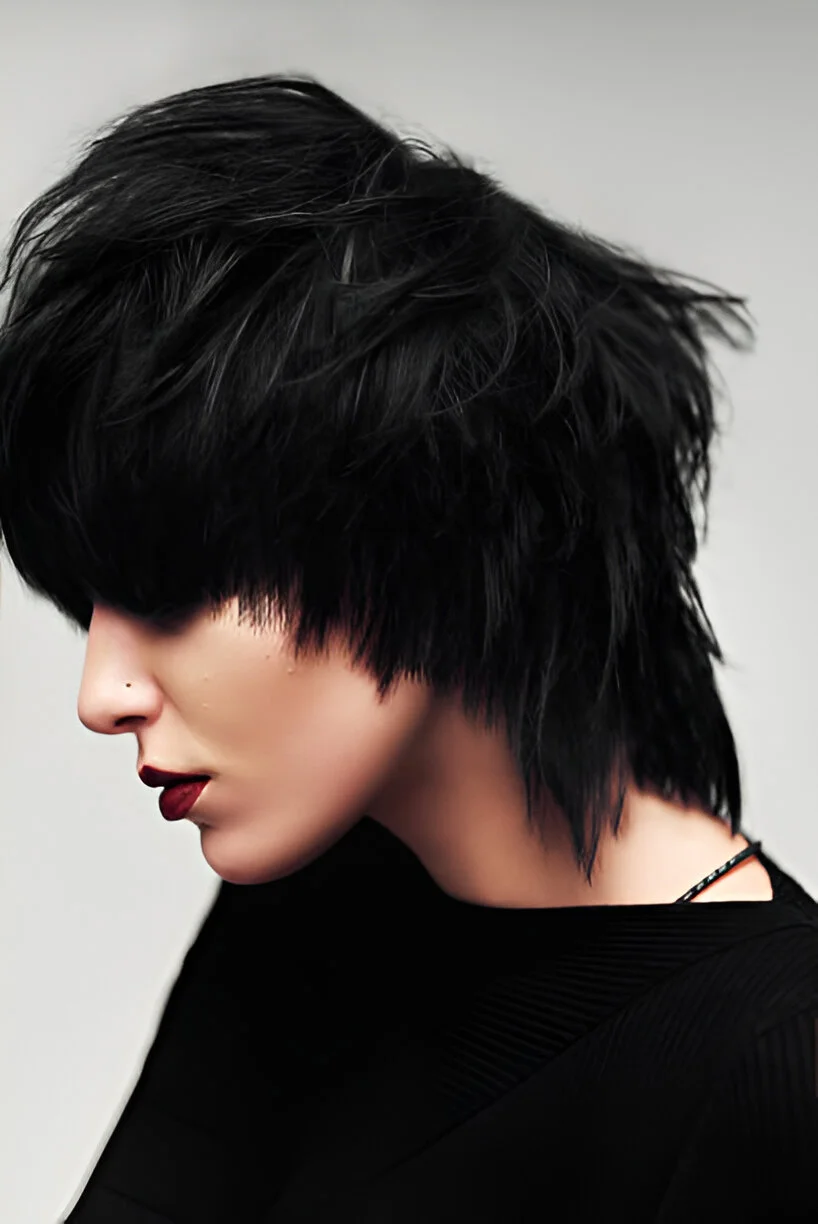
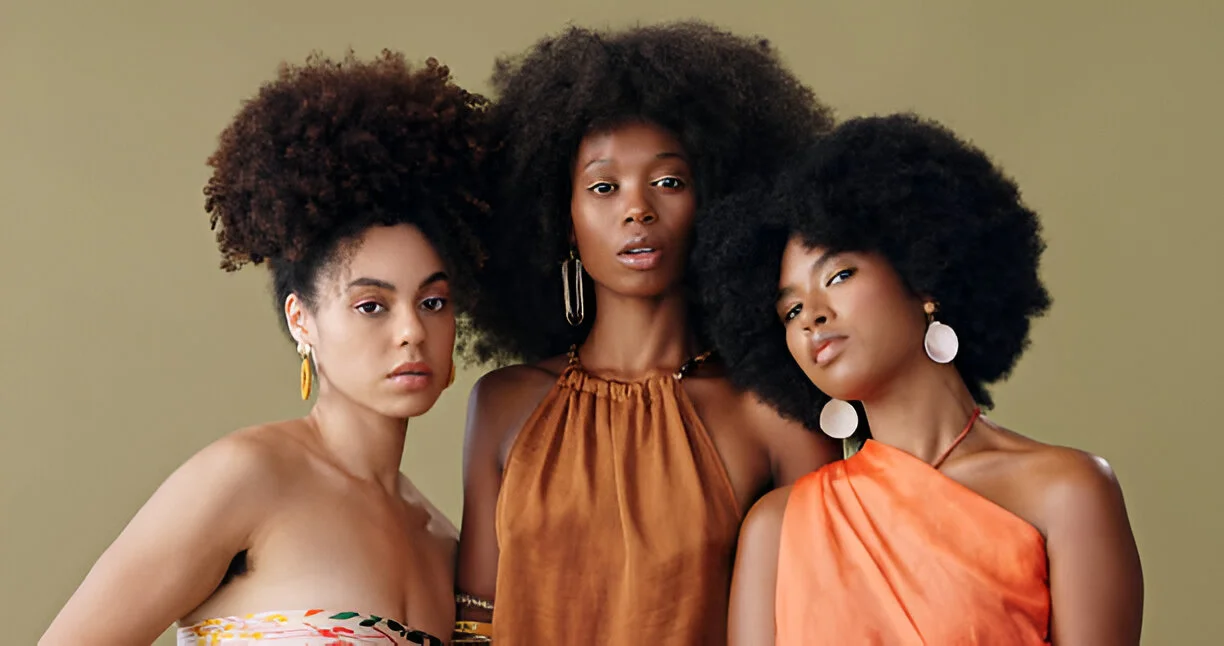

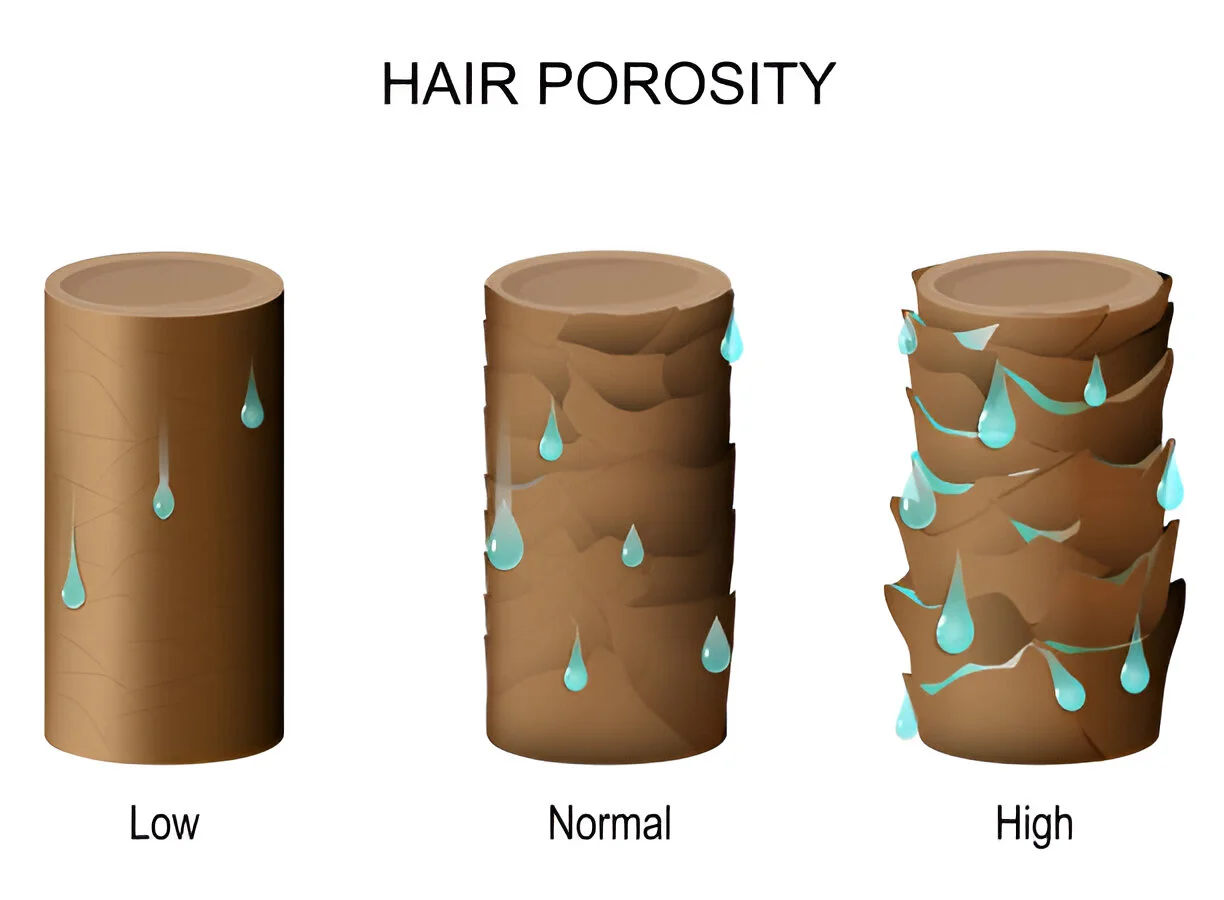
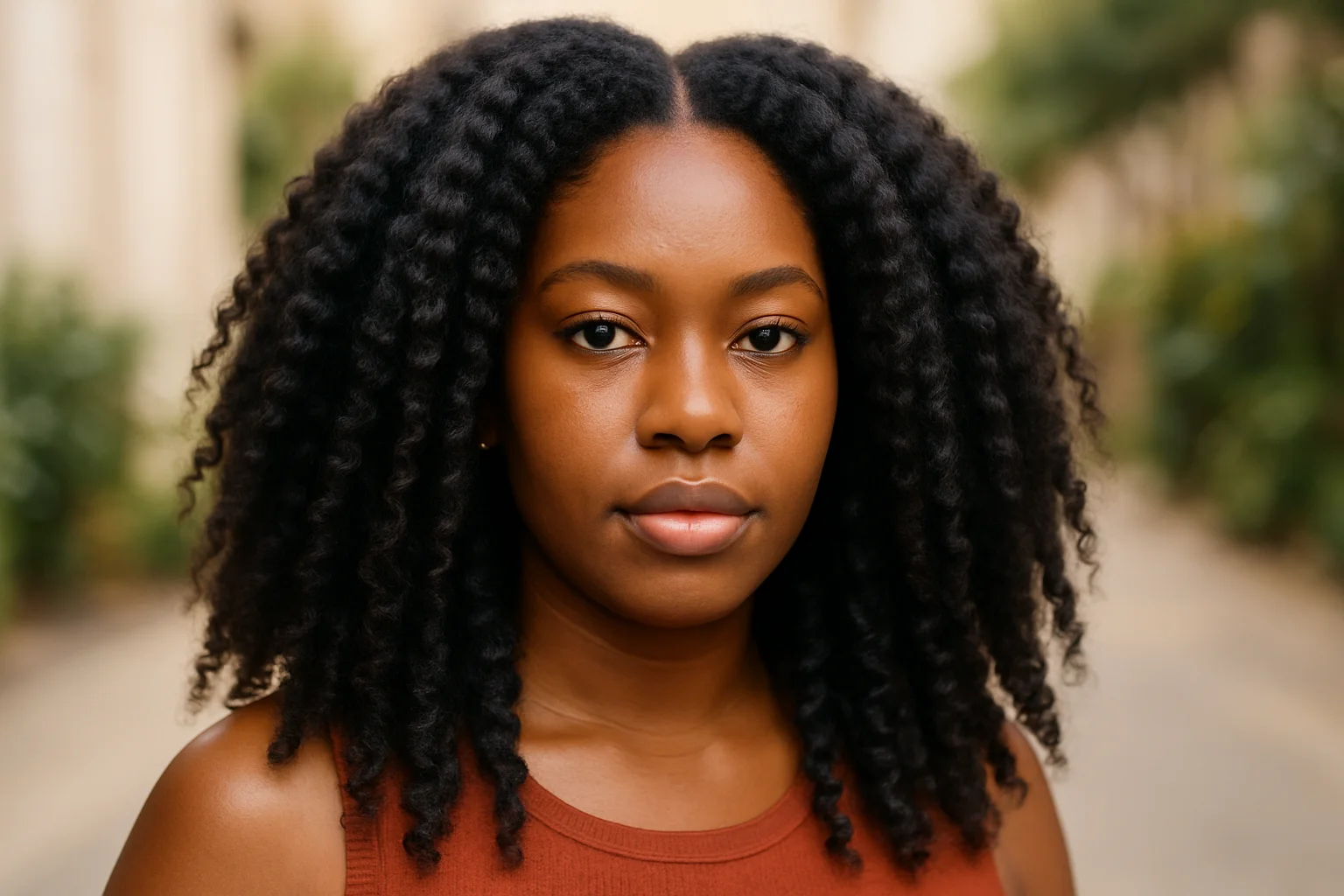
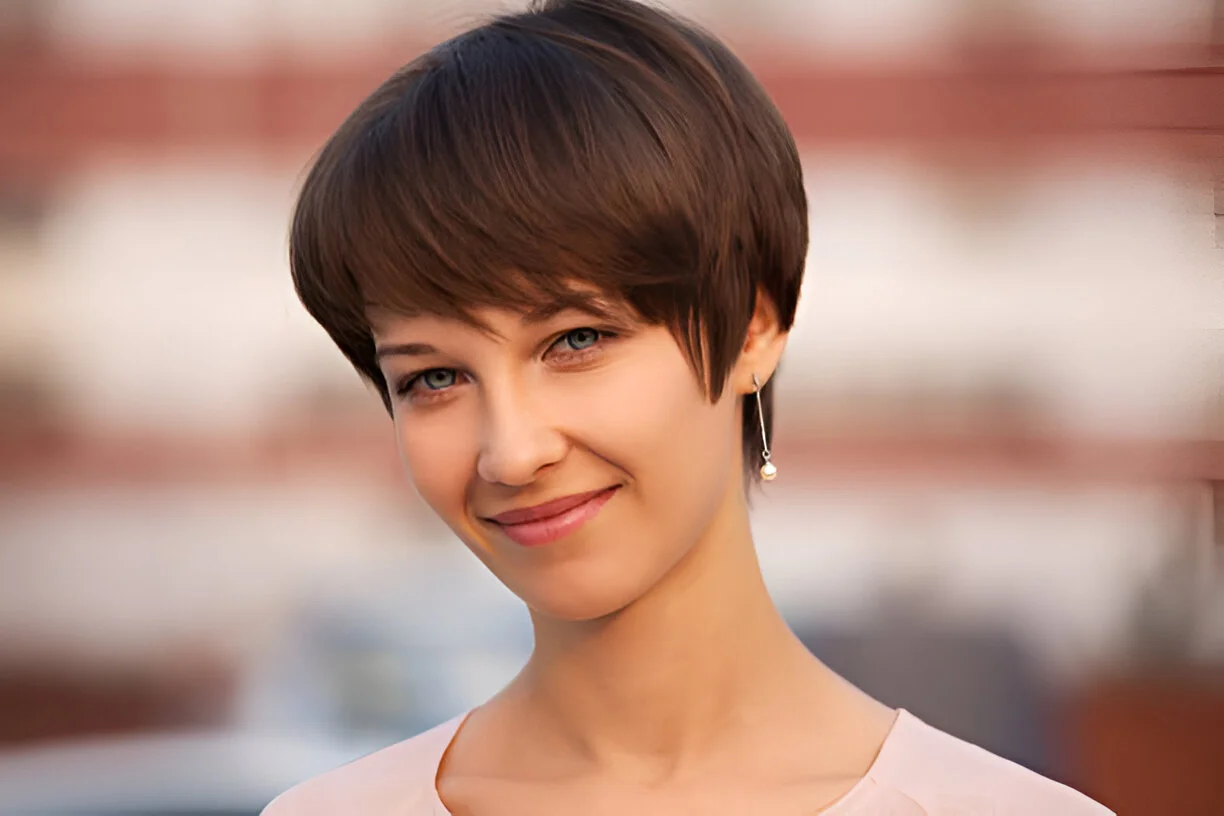
10 thoughts on “Top 6 Facts About Different Hair Types Explained”
Comments are closed.